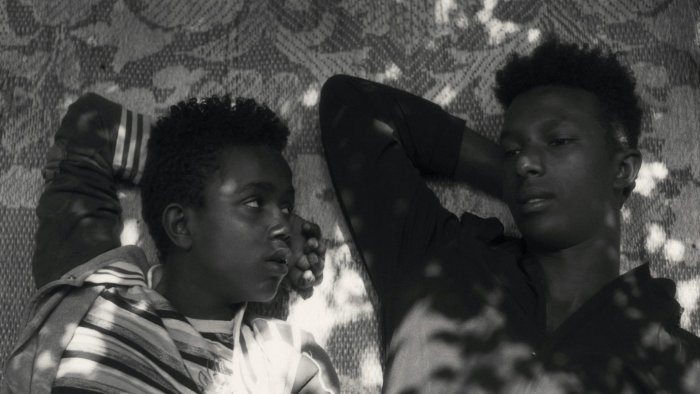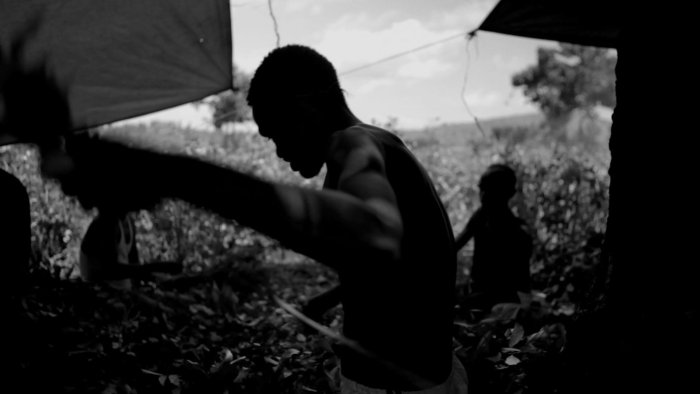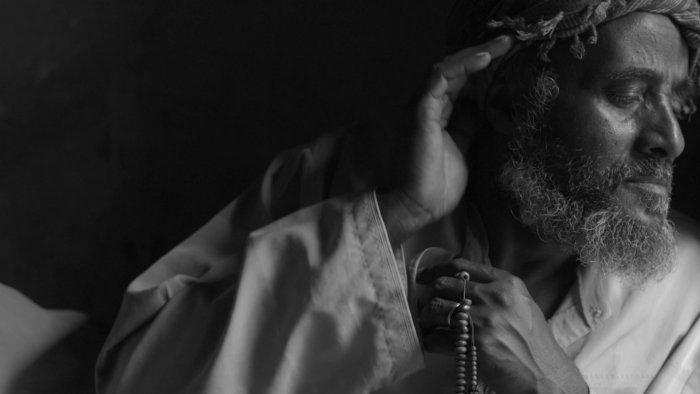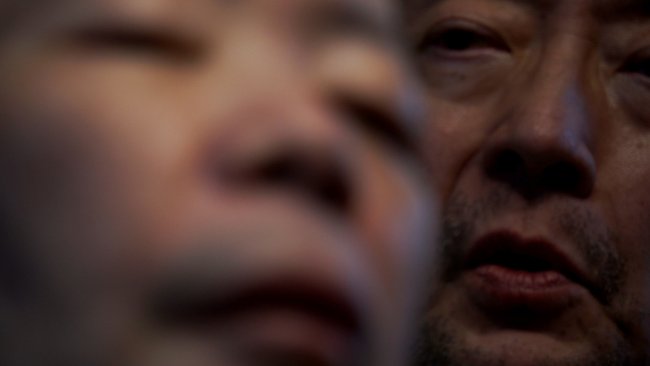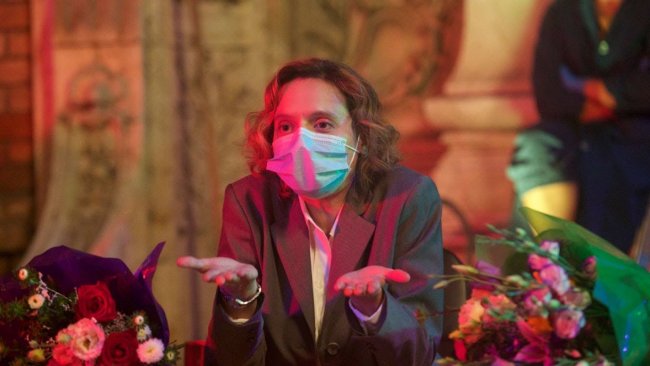Faya Dayi
[…] Through this connection between the experience of alteration and the theme of distance, we feel the presence of political, ethnic, and postcolonial questions, which are only approached in an impressionistic manner.
[…] Between daylight and darkness, cinema itself is the world of semi-consciousness of khat. There is no way out of the khat world.
Text: Giuseppe Di Salvatore
If we refer to Antoine Galland’s pages on De l’origine et du progress du café (1699), we’ll find enormous similarities between the “viral” phenomenon of the diffusion of coffee since the 16th century and the collective mania in Ethiopia of chewing khat leaves – this being the focus of Jessica Beshir’s Faya Dayi. Galland mentions khat too, as an antecedent habit in 16th century Yemen whereas, in Beshir’s film introduction, the Ethiopian tradition of coffee farming is mentioned as leaving its place to khat, for coffee would require too much water, or so it is said. However, the khat shrub also needs huge amount of water – up to 40% of Yemen’s water supplies seem to be absorbed by khat farming today… The manic aspect of the consumption of khat therefore not only depends on its stimulating and euphoric effects, but is also augmented by the unsustainable consequences of its economy. The small fortune of the farmers is clearly not enough to balance an economic and social phenomenon that remains under the banner of expenditure and waste. In Galland’s historical survey, looseness of morals emerge as the leading argument of reiterated and finally unsuccessful essays to ban the consumption of coffee. Former cafés also constituted the birth of social meetings without the control of religious power. On the contrary, the Ethiopian khat consumption – akin to the coffee one – is traditionally linked to religious practices, mostly for the Oromo-speaking people. Khat is far from being banned, and the perspective of the film is completely internal to the world of khat consumption. Both factual information and a hint of negative judgement surface only occasionally through the stories of almost-characters. In fact, these stories mostly appear like eventual knots in a fluid yet non-linear flow of highly aesthetic black and white images. The solid continuity of the music layer strengthens this homogeneous fluidity, whose aesthetic experience clearly expresses, or reflects or interprets, the altered experience that comes of chewing khat leaves.
My idea to convey Galland’s infamous historical text on coffee therefore does not intend to highlight the documentary and informative aspect the film, which is largely surpassed by its expressive intentions, but to stress the universality of the social phenomenon that we experience through the film. The apparent exoticism of a far country and an unknown drug actually makes us focus on the typically human tendency or desire to modify or depart the world through an individual, perceptual experience of alteration. In this respect, the lighter the drug is (in terms of physical harm), the more effective are the social consequences of said drug – and khat leaves echo coca leaves, cannabis, vodka or betel nuts in other parts of the world.
Definitely positioned as an experience film, yet somehow also naively overusing slow motion and smoke, we can explore the benefits and consequences of alteration, mainly in connection – and here is the true originality of the Faya Dayi – with the theme of distance. Distance from wealth, distance through marginalisation, distance by migration all intertwine. Through this connection between the experience of alteration and the theme of distance, we feel the presence of political, ethnic, and postcolonial questions, which are only approached in an impressionistic manner. Amongst the sketched stories, one seems to prevail: a child lives with the burden of a heavily khat-addicted father and the absence of a mother (who has left them), and to whom he writes (unanswered or unsent) letters. Is there here also a hint of gender topics? The almost-absence of women in the film could be meaningful, yet their image remains only enigmatic.
The hope of the child, otherwise trapped between despair and resignation, is to leave, which sadly does not constitute a real way out of the situation, at least insofar as migration appears in the film only as a variable of the theme of the distance, thus still within the immanent power of khat’s altering capacity. Is the only coloured image of the film, where we see glowing red coals, the signal for a way out of the khat world? This filmic sequence clearly presents a dream of the child, and dreams represent nothing but distant worlds of semi-consciousness – again, something quite close to the khat experience. A wonderful mythological tale literally “punctuates” the film, and will reveal its meaningful end only at the end of the film: three men are seeking the water of eternal life; only the one who had the intention to share it with all the people will get it, and it will become the daylight. The other two, who one wanted the water also for himself and the other only for himself, will respectively receive darkness and khat. Beshir comments upon the end of the tale with images of cinema projection. Between daylight and darkness, cinema itself is the world of semi-consciousness of khat. There is no way out of the khat world.
Faya Dayi so displays a contradiction or a tension as, despite some critical elements addressing the miserable consequences of chewing khat, its form and its end make of it a problematic homage to the excitement of khat, and to the excitement of cinema.
Watch
Screenings at the Festival Cinémas d'Afrique Lausanne 2022
Info
Faya Dayi | Film | Jessica Beshir | USA-ETH-QAT 2021 | 120’ | Visions du Réel Nyon 2021, Grand Prix at Visions du Réel Nyon 2021
First published: April 29, 2021
